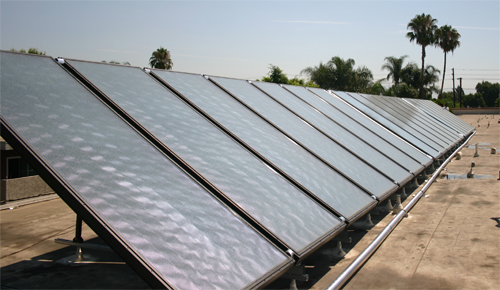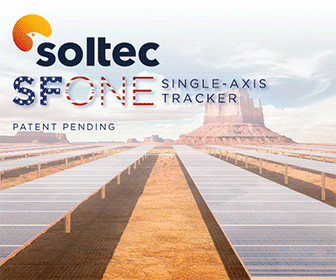An Untapped Solar Market: The renewable potential of multi-family housing
 Solar energy is rapidly becoming a popular option for homeowners as a way to save money. But, what about folks who live in apartments or condos? Multi-family dwellings, as they are known, are providing the next potential growth opportunity for the residential solar industry. Now, innovative financing mechanisms allow even low-income families to take part in the benefits of solar power.
Solar energy is rapidly becoming a popular option for homeowners as a way to save money. But, what about folks who live in apartments or condos? Multi-family dwellings, as they are known, are providing the next potential growth opportunity for the residential solar industry. Now, innovative financing mechanisms allow even low-income families to take part in the benefits of solar power.
America’s multi-family housing market offers a great, untapped source of potential renewable energy. The fundamentals of these facilities match up well with what the solar industry looks for in terms of good residential customer targets. Multi-family housing units have high energy and water usage, and the residents often pay high-energy rates. These properties also tend to have stable, long-term ownership. Plus, many areas of the country are offering financial incentives for such projects.
PV versus solar water heating
Multi-family properties are good candidates for solar PV and solar water heating systems. When deciding between the two options, it’s important to look at a facility’s roof space to see which technology can best maximize cost savings.
For buildings that use central water heating, installing a solar heating system will often be more economical than installing PV, in part because these systems are so efficient. Thermal systems can heat the water that residents use at a significant discount compared to what is paid to heat water with gas or electricity. In fact, solar hot water systems can be one of the most efficient ways to reduce a building’s carbon footprint.
Perhaps the most attractive feature, at least for the residences, are the rates when going solar. Larger buildings (think industrial users) often pay much lower rates for energy than single-family units. Despite their size and actual power usage, energy pricing for multi-family housing is often closer to single-family homes than it is to commercial rates. This presents a unique opportunity for renewable energy companies to finance solar systems, such that the customers have no upfront or out-of-pocket expenditures, and yet can receive clean energy at a discounted price—compared to the price of today’s fossil heating.
Solar pros & cons
The propensity of homeowners to move can be a leading barrier when it comes to deciding whether or not go solar. A family might not be sure if they’ll be living in their home long enough to see a return on such an investment.
However, multi-family properties mitigate that risk, as ownership of the building is less likely to change hands over the lifespan of a solar system. For condos, the cost of solar can be priced into the residents’ monthly condo fee. Stable ownership is true in the low-income housing market segment, as well. In many localities, the city or county government has ownership of these buildings, ensuring possession is stable over time.
An additional benefit to seeking projects in multi-family dwellings is the number of available incentives available. One example of this is the California Solar Initiative’s Solar Thermal Program. The program offers rebates of up to $500,000 for solar water heating systems on single, multi-family properties—whether it’s a low-income facility or not. Many localities offer incentives or grants to companies that provide energy improvements to these facilities.
This sounds great on paper, but what does it look like in the real world?
Solar in real life
Coral Wood Court Apartments, a California low-income housing community, recently had 42 flat-plate solar thermal collectors installed on the facility’s rooftop. These collectors use sunlight as a heat source for the building’s hot water tank, which was previously heated by gas. The system is expected to save more than $175,000 over the next 30 years.
And, it isn’t just California that’s making gains in multi-family solar. A 267-unit high-rise building located in Washington had 64 solar thermal collectors installed on its roof back in January 2012. This system is designed to fully heat 50 gallons of water per panel, per day. Over its first eight months in operation, the system consistently delivered an average of 551.5 therms of heat energy monthly, or 28.7 kBTU per collector per day. This amount of energy is equivalent to 16.2 megawatt-hours (MWh) of electricity generated monthly, or 8.4 kilowatt-hours (kWh) per collector daily.
The total cost of this system amounted to $288,000. The system was also financed, meaning the customer paid nothing upfront. Plus, for the 10"year contract term, the customer will pay 35% less than its natural gas utility rate for each therm of solar hot water delivered—regardless of fluctuations in their conventional utility rate. This has led to residents having seen an average of 19% monthly savings in their water heating bills. For the six-month period between February and August of 2012, this averaged $216 per month for a total savings of over $1,300.
These examples show that home ownership is no longer a necessary requirement to benefit from residential solar energy. It won’t be long before the industry comes to recognize this next great opportunity for tapping the sun.
Zach Axelrod is the CEO of Nextility
Nextility
www.nextility.com
Author: Zach Axelrod
Volume: September/October 2014









.jpg?r=8530)
.jpg?r=9583)

.gif?r=4050)